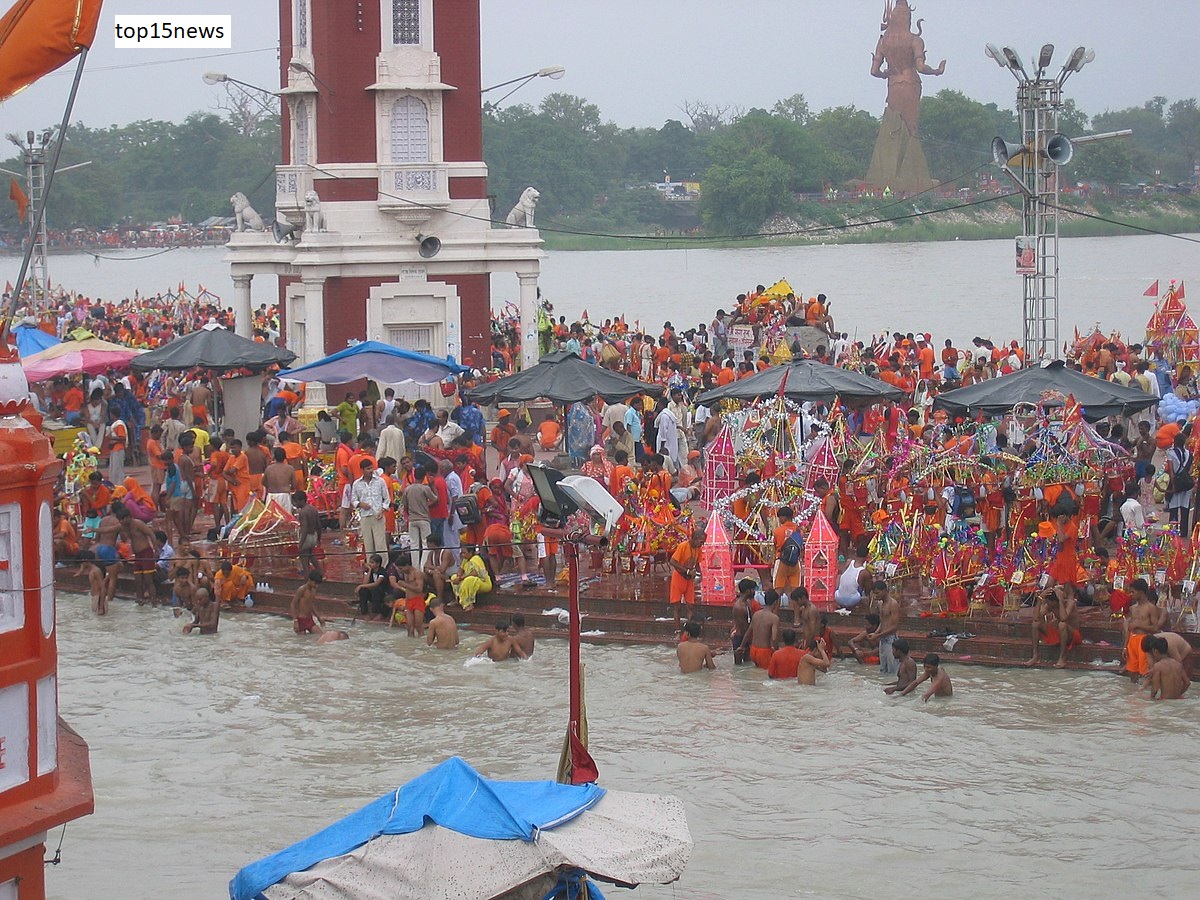Kavad Yatra History is a deep-rooted tradition in Indian culture that reflects extreme devotion towards Lord Shiva. The holy month of Sawan in 2025 will begin on 11th July and continue till 9th August, marking the sacred period during which this powerful pilgrimage takes place.
Lakhs of Shiva devotees from Northern India — especially from Uttar Pradesh, Uttarakhand, Haryana, Bihar, Delhi, and Rajasthan — walk barefoot with saffron-colored clothing, chanting Bol Bam, carrying the sacred Ganga water in kavad on their shoulders.
What is Kavad Yatra?
To understand Kavad Yatra History, it is crucial to know what this spiritual event is. Kavad Yatra is an annual religious pilgrimage where Shiva devotees collect holy water, especially from the Ganga River, and travel barefoot to offer it to Lord Shiva at temples across the country.
The journey is marked by spiritual discipline — no alcohol, non-vegetarian food, or impure actions. Devotees wear orange or saffron clothes, carry decorated bamboo carriers (kavad), and walk long distances chanting “Bol Bam”.
Kavad Yatra History and Its Mythological Beginnings
Kavad Yatra History is tied to multiple mythological figures and spiritual episodes from Hindu scriptures. The origins are debated, but three prominent stories are often associated with the beginning of this yatra.

The Legend of Parshuram
According to ancient belief, Kavad Yatra History started with Lord Parshuram, the sixth incarnation of Vishnu. He is said to have fetched Ganga water from Garhmukteshwar and offered it at a Shiva temple near Baghpat (in present-day Uttar Pradesh). His devotion is regarded as the earliest inspiration behind this pilgrimage.
The Story of Shravan Kumar
Another tale central to Kavad Yatra History is that of Shravan Kumar, a symbol of filial piety. In the Treta Yuga, Shravan Kumar carried his blind parents in a kavad-like structure on his shoulders and took them to various pilgrimages. He brought Ganga water from Haridwar to serve his parents, showcasing service, sacrifice, and faith — the core principles of this Yatra.
Ravana and the Cooling Waters of Ganga
Kavad Yatra History also finds reference in the tale of Ravana, the mighty king of Lanka. After Lord Shiva drank the poison during the Samudra Manthan (churning of the ocean), Ravana fetched Ganga water from the Himalayas to perform abhishek and cool down Shiva’s throat, turning it blue (Neelkanth). This act is seen as a gesture of supreme devotion.
Kavad Yatra in Modern India
Today, Kavad Yatra History continues to live through the faith of millions. The event has evolved into a massive cultural and religious movement.
Some of the major routes of the Yatra include:
- Haridwar to Delhi
- Sultanganj (Bihar) to Deoghar (Jharkhand)
- Gaumukh/Gangotri to Neelkanth Mahadev
- Varanasi to Baidyanath Dham
These routes span hundreds of kilometers, and the Kavadias (devotees) complete this journey by walking barefoot, braving harsh weather, driven purely by devotion.
Spiritual Significance Behind the Ritual
Kavad Yatra History is more than just mythology — it’s about inner purification, spiritual awakening, and supreme focus. Carrying the kavad is symbolic of carrying one’s karmic burdens and surrendering them at the feet of Lord Shiva.
The water collected during the Yatra is usually poured on Shivlings during Sawan Shivratri or specific Mondays of the Sawan month.
Rules and Disciplines During Kavad Yatra
As per Kavad Yatra History, the discipline followed during this pilgrimage is strict:
- No footwear
- No meat, alcohol, or tobacco
- No impure or angry behavior
- Complete focus on devotion
Even a small impurity can disqualify the water being offered to Shiva. The seriousness of discipline reflects the sanctity of the journey.
Cultural Impact and Legacy of Kavad Yatra
Kavad Yatra History is not just about religion; it’s a festival of togetherness, brotherhood, and resilience. From traditional folk music to food stalls, from emergency health camps to volunteer-run security services — it’s a massive operation supported by local communities and governments alike.
Despite the hardships, millions continue this journey every year, affirming the timelessness of faith in Lord Shiva.
Why Understanding Kavad Yatra History Matters Today
Knowing Kavad Yatra History helps us connect to centuries-old Indian traditions that celebrate faith, discipline, sacrifice, and devotion. In today’s fast-paced world, such practices remind us of the importance of slowing down, detoxifying the mind, and embracing simplicity.
CMO Mathura Vacancy 2025: Medical Officer Jobs Without Written Test


[…] Kavad Yatra History: 3 Powerful Facts And Origins Revealed […]